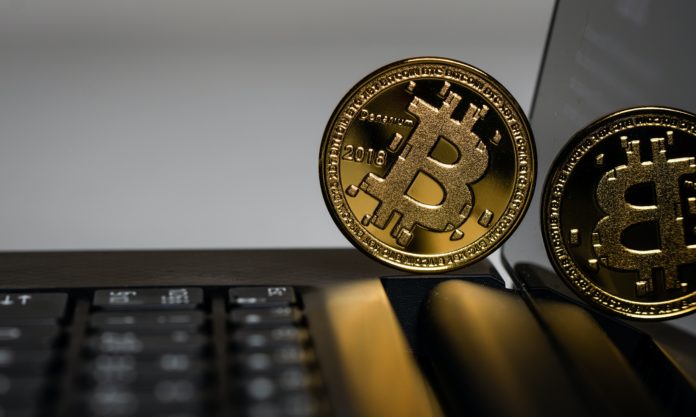Volume 1
Does losing 10% of your investment portfolio in 6 hours excite you? How about gaining 25% in 24 hours only to lose it again the next day but then double your total investment weeks later? Welcome to the wild world of cryptocurrency investing. Many of you have likely heard about the volatility in the cryptocurrency markets or Bitcoin (ticker BTC), which is by far the most known and discussed asset in the space. It becomes an especially hot topic given that on December 16, 2020 it broke it’s previous all-time-high of nearly $20,000 from 3 years prior set on December 18, 2017. The price per Bitcoin then went on to over double that all-time-high hitting over $58,000 on February 21, 2021. This is an increase of 190% over the course of two months. Yet as I write this now, the price hovers around $48,000, reflecting a 20% drop in less than a week. By the time you read this, it will be late March or early April and the price could be very different for Bitcoin than it is right now. It may climb to $60,000 or more, or it could drop back down to $30,000 or less. Or it could do both during printing and distribution goes to and wind up right back at $48,000 while you read this. Though I am not giving financial advice, one thing I like to point out to any first time Bitcoin investor is that you don’t need to buy an entire single Bitcoin, but can buy a fraction of a Bitcoin as small as .00000001, referred to as a Satoshi.
“Magic Internet Money”
So what is Bitcoin? Many of its critics have called it magic internet money. It’s also been called “fool’s gold” by real gold investor Peter Schiff as well as rat poison squared by Warren Buffet. Then you have people like Michael Saylor, the CEO of business intel company, Micro Strategy who describes it as “Gold without all the imperfections of gold- on a digital monetary network that moves at the speed of light -that you can program to do one million transactions per second.” This latter description is not only a more positive description than rat poison or fool’s gold, but it is also more accurate in describing what it actually does and can do in the future. That said, Saylor is a major investor in Bitcoin whereas Schiff is a major investor in gold and sees Bitcoin as a threat to gold. So how do you know who is right when there are clear ulterior motives involved? You don’t and for the purpose of this article I am not going to focus on that, but rather explain what Bitcoin is and leave it up to you to make your own judgment as to its purpose or value or lack thereof. After all, reading biased narratives, often with opaque agendas in the mainstream media, does little for those seeking to actually understand a concept in its pure form. Full disclaimer, I do own a small amount of Bitcoin among other cryptocurrencies.
Bitcoin is Born
To understand Bitcoin, we must first go back to 2008 when bitcoin.org was registered and when the first Bitcoin white paper was published by the publicly elusive Satoshi Nakamoto, called Bitcoin: A peer-to-peer Electronic Cash System. In this paper, Satoshi describes Bitcoin as “a peer-to-peer version of electronic cash that would allow online payments to be sent directly from one party to another without going through a financial institution.” Or to put more plainly, being able to send and receive money over the internet without using a bank like Wells Fargo or PayPal to do so. Up until 2008, other alternative digital forms of money had been attempted but were unsuccessful as they could not solve the double-spend problem. Double-spending is a problem in the digital world given the digital file that represents the money or token could be duplicated or falsified fairly easily. Kind of like copy and pasting a file and now you have two of the same file. This problem is less likely to exist in the traditional financing world given the responsibility of the bank is to ensure an accurate ledger of money coming in and going out. They are essentially trusted to do the addition and subtraction necessary to ensure the same money cannot be spent by the same individual more than once.
The Blockchain
Bitcoin solved the double-spend issue for the digital currency world by creating a network that timestamps all transactions and records them on a public ledger called a blockchain. A blockchain is a type of database that stores information. However, unlike a typical database that structures its information into tables, similar to an Excel spreadsheet (in its most basic form), a blockchain structures and stores its information into a block, where each block has a certain storage capacity. Once a given block is filled up with information, it becomes set in stone with an exact timestamp of its creation and becomes permanently part of a blockchain. From there, a new block begins to fill with information and the process continues with new blocks being added, filled, timestamped and chained to the previous block, hence the term “blockchain.” The Bitcoin blockchain is simply a permanent public ledger that records all Bitcoin transactions and by nature is designed to be immutable (ie unable to be altered). The fact that the blockchain is public, ongoing and immutable allows for anyone with an internet connection to view every single Bitcoin transaction that has taken place since the beginning when the first block was “mined” (created) on January 3rd, 2009. In other words, Bitcoin is a currency that runs on a blockchain database that serves as a permanent and transparent ledger of all transactions made with Bitcoin since 2009. This simultaneously allows both transparency of all transactions while maintaining the privacy of those making it. The Bitcoin blockchain network has been operating for over 12 years and only has gone down twice in that time with the most recent being in 2013. This is in contrast to for example, the Fed’s website going down as recently as February 24 of this year, the third time in the last two years.
Bitcoin Mining
Alright, so everyone has heard the term mining before, and for many Americans it conjures up images of prospectors in raggedy wide brimmed hats striking rocks in the late 1840s with pick axes in hopes the work will find them gold. In the Bitcoin world, there are no pick axes or rocks, but there is work. However, this work is done by individual computers decentralized across the world that solve complex math problems to verify the legitimacy of the transactions taking place on the Bitcoin network. Once the math problem is solved and the transaction is correctly verified, the work is rewarded with new Bitcoin being minted (created) and distributed to the “miners” (in fractions of a Bitcoin) that did the work. This concept is called proof-of-work (PoW) because it proves that work was done based on the equations that were solved. It should be noted that these complex math problems are not actually solved by people but rather by sophisticated computers (owned by a person/entity) designed to mine Bitcoin and are spread out throughout the world in a way that no one centralized entity or person can control them.
In the early days, this mining work could be done on a regular PC but now the most cutting edge “mining rigs,” such as those made by a company called Bitmain, are mainly used.
To summarize, the process of Bitcoin mining is a form of work that a decentralized group of computers do and in doing so, serve as the auditors of the Bitcoin network verifying that all the Bitcoin transactions taking place on the network are legitimate, thus avoiding any double-spend situations. Mining work is rewarded in the form of new Bitcoin being minted and distributed to those who did the mining.
Valuing Traditional Currency
Now that we’ve established where Bitcoin came from and what a blockchain and “mining” are, it’s time to talk about the value of Bitcoin. When I say value, I am not referring to the current price of Bitcoin but rather its value as a trade currency or store of value in general. In doing so, we must first consider how we come to value any traditional currency.
Let’s take the US Dollar. The US dollar is considered a fiat currency, which means that its value is based solely on the respective government saying that it has value. The Indian rupee, the British pound, the Mexican peso, the Chinese yuan and nnations across the world transact in a form of fiat currency. Prior to the early 70s, we used the gold standard which tied currencies like the US dollar to a fixed or finite amount of gold to determine its value. By opting out of the gold standard system and into fiat currency, we have effectively given that power to central banks like the Federal Reserve System to decide how much money is created and thus is not tied to any real world commodity.
I use the term created and not printed, because it is important to note that all US dollars are not actually printed anymore and thus a lot of the dollars that we believe exist, don’t actually physically exist anywhere beyond digital numbers in a bank. In fact, the majority of US dollars in circulation at this moment exist only in digital form. This is allowed due to fractional reserve banking, which is a system the US and much of the world currently runs on, in which only a fraction of bank deposits are backed by actual cash. In the US, most banks are only required to hold 10% of their deposit in actual cash.
What makes Bitcoin Different?
Now that we have established that traditional fiat currencies are valued solely based on the government that backs them, it will make it easier to distinguish why a cryptocurrency like Bitcoin is different. Aside from transactions being verified on a decentralized immutable blockchain instead of a centralized bank, Bitcoin is also different in that when Satoshi Nakamoto created the Bitcoin network, he did so in a way that allowed for only a finite amount of Bitcoins, 21 million, to be created. Ever. In other words, once all 21 million Bitcoin are mined, no more Bitcoin can ever be mined again. As of this writing, approximately 18.5 million Bitcoin have been mined leaving less than 2.5 million to be mined, which is expected by 2140. In other words, Bitcoin is a deflationary asset that over time, assuming people use it for transacting, should increase in value. This is in contrast to traditional fiat currencies that are “printed” out of thin air, especially during economic crises (COVID-19 ) where governments “stimulate” the economy by creating and injecting more money into it through the central banking system.
Thus by their very nature, all fiat currencies are constantly subjected to the dangers of inflation and one need not to have a degree in economics to note that the price of essential service industries like housing, healthcare and education are rising very fast in the US. Sure, you may pay less for a flat screen TV than you did 5 years ago, but you’re paying more for food, your mortgage/rent and your hospital visit making your dollar worth less (due to inflation).
Bitcoin’s Role in Society
Now, let’s discuss the use cases for Bitcoin. I think any educated person calling Bitcoin “magic internet money” at this point would also have to include the US dollar and most other fiat currencies in the same category; if for no other reason that most traditional money that exists today exists mostly as digits in a bank computer and is being transacted more often through credit card chips, apps like Venmo or websites like Amazon, and is never even physically seen by those using it. When was the last time you saw a physical dollar from your direct deposit paycheck anyway? SO….if we can accept that digital money is something we are already using, is it that hard to imagine a digital currency like Bitcoin having value even though it is not available in physical form?
If we assume it has value, it doesn’t necessarily mean it is a currency. After all, people have to be able to use it to buy things if it is going to be considered a more legit currency, right? Perhaps. Currently there are just over 15,000 businesses that are accepting Bitcoin and though that number will likely go up exponentially in the future, it doesn’t necessarily mean that Bitcoin’s greatest value will be used as a spending currency to do daily transactions. However, given the deflationary nature of its transparent, verifiable, finite supply and portability to be moved across the globe in seconds- an advantage that would take something like gold days or weeks to make it that far – does help build a case for Bitcoin as a store of value; a digital gold as many refer to it.
I personally believe “store of value” will be one of the long-term use cases for Bitcoin and the role of performing daily digital transactions to buy tangible items like coffee could be deferred to Litecoin and other forms of cryptocurrency tokens, such as those being exchanged on decentralized finance networks like Ethereum and/or to central bank digital currencies (CBDCs), like the digital Yuan currently being tested in China.
Bitcoin Moving Forward
As of now, Bitcoin remains a highly speculative and volatile asset as it is still in the early phases of adoption. A component I should note, is one of the main reasons many institutions are wary to put it on their balance sheets. Though, that is changing by the day as more mainstream companies such as Micro Strategy, Square and Tesla purchase it for reasons ranging from a hedge against inflation to an investment in a new asset class of disruptive financial technology. In fact, as I do final edits on this article before print, I couldn’t help but add the following quote from page 18 of a 108 page analysis published on March 1, 2021 by Citi (bank) GPS entitled “Bitcoin: At the Tipping Point”.
“The Bitcoin payment system is uniquely resilient. Distribution makes it difficult for any one corporation or government to interfere with its operation, and censorship resistance makes it practically impossible to lock out any one group of people. The network is also uniquely accurate. Put together, all of these properties make the Bitcion network a true offspring of the digital era. There is no scheduled down time, no ‘opens’ or ‘closes’, and no painstaking reconciliation. A transaction across the globe happens as seamlessly as one across the room, for the simple reason that as far as the blockchain is concerned, each is just a ledger entry: a debit and a credit.”
None of this column should be considered financial advice, but please feel free to email your questions or comments regarding this article to Chris@LocalTiesMedia.com.







